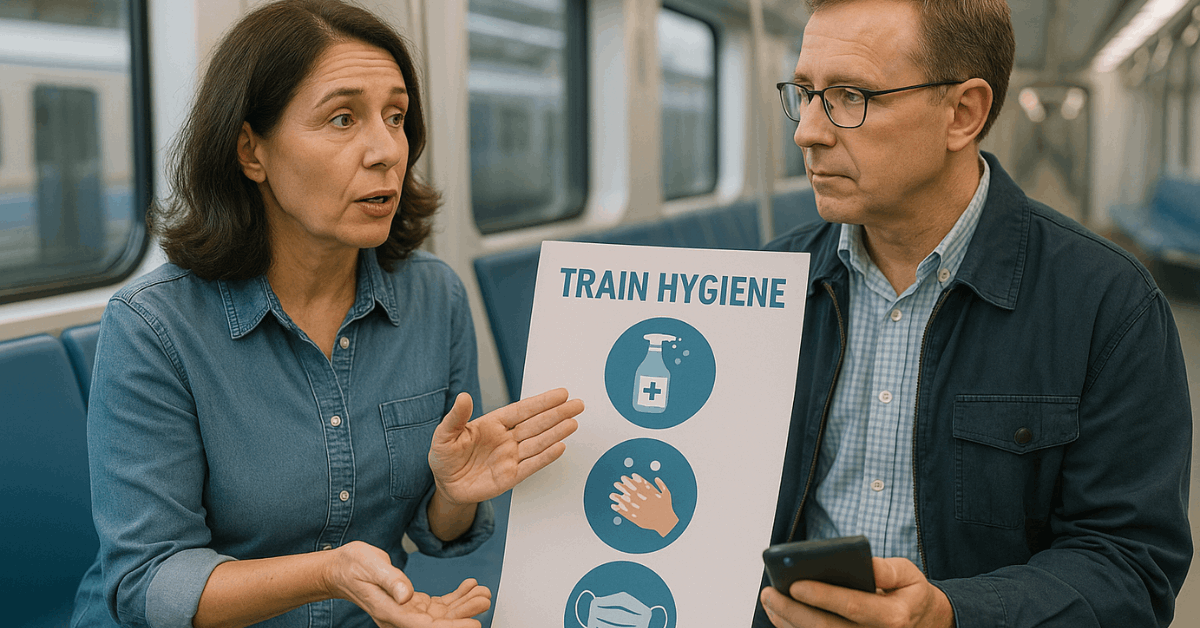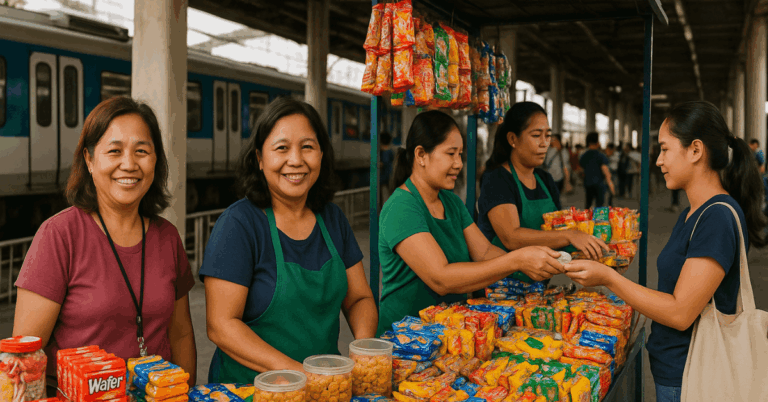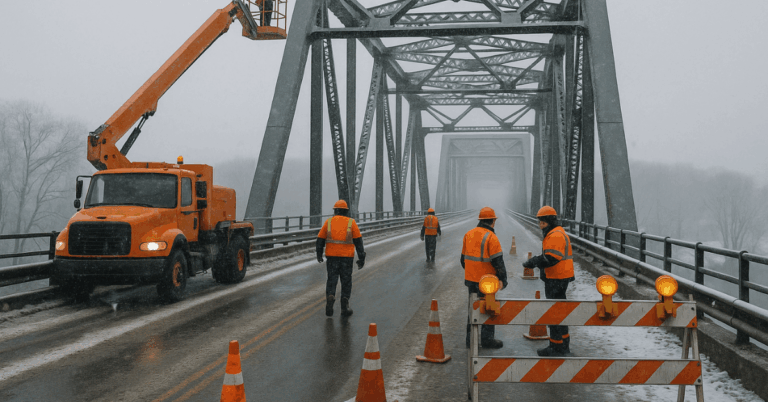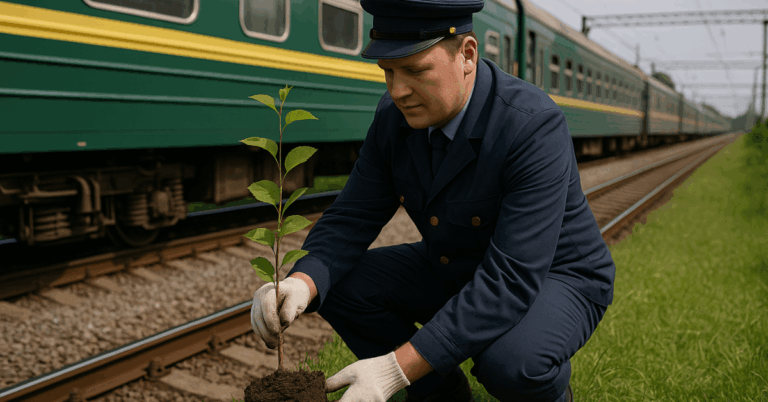Train systems serve millions daily and demand strong hygiene standards. Public awareness campaigns on train hygiene educate passengers and promote better travel habits.
They blend communication, education, and technology to maintain safer journeys. Understanding these efforts helps you support public transport cleanliness.
Why Train Hygiene Matters?
Trains carry thousands of passengers daily, making them hotspots for bacteria and viruses. Maintaining proper hygiene prevents the spread of diseases and improves the overall passenger experience.
Clean environments also boost public trust in transport systems. Both passengers and railway authorities share the responsibility of ensuring that hygiene standards are met. Learn more about global train hygiene guidelines from the World Health Organization (WHO).
Health and Safety Benefits
A hygienic train environment minimizes health risks like respiratory infections and skin irritations. Regular cleaning and disinfection protect both staff and passengers. Campaigns that raise hygiene awareness also build long-term public discipline.
People become more cautious about littering and hand hygiene when they understand its impact. Official cleaning practices are outlined by the Centers for Disease Control and Prevention (CDC).

Passenger Comfort and Trust
When passengers travel in clean trains, they feel safer and more satisfied. Comfort leads to consistent ridership and loyalty to public transport systems.
Campaigns that focus on hygiene create visible changes in how people behave. A clean and pleasant environment encourages mutual respect among commuters.
Key Elements of Awareness Campaigns
Campaigns succeed when they communicate clearly and reach a broad audience. Their structure must be organized, visually engaging, and easy to understand. Every effort should focus on consistency and repetition to reinforce hygiene habits.
Communication Tools Used
Different media channels are combined to reach passengers effectively. Posters, short videos, announcements, and social media content work together to spread messages.
Digital platforms allow quick updates and visual storytelling. Clear visuals and short instructions make hygiene messages easy to follow. See how communication tools are applied by the International Association of Public Transport (UITP).
Collaboration and Support
Effective campaigns rely on teamwork between rail authorities, government agencies, and local health organizations. These partnerships ensure accurate and trustworthy information.
Volunteers and trained staff also take part by demonstrating proper practices. Combined efforts make hygiene campaigns sustainable over time.
Monitoring and Feedback
Measuring the success of hygiene initiatives requires continuous evaluation. Surveys and feedback tools track passenger awareness and satisfaction.
Authorities analyze data to adjust messages and methods. This process helps maintain momentum and transparency.
Popular Campaign Methods
Public hygiene efforts vary depending on location and culture, but successful strategies share similar patterns. They emphasize visibility, education, and involvement.
- Mass Media Promotions: Campaigns use radio, TV, and online platforms to reach large audiences.
- Station Signage and Posters: Visual reminders placed on platforms and trains encourage cleaner habits.
- Public Demonstrations: Live activities teach passengers how to maintain cleanliness effectively.
- Social Media Engagement: Hashtags and challenges promote active participation among commuters.
- Incentive Programs: Rewarding cleanliness encourages cooperation and repeat positive behaviors.
Each method strengthens awareness and motivates people to act responsibly during travel.
Successful Global Hygiene Campaigns
Several countries have achieved impressive results through consistent hygiene initiatives. Their approaches demonstrate how communication and cooperation create measurable change.
India’s “Swachh Rail, Swachh Bharat” Initiative
This campaign promotes nationwide cleanliness across train networks. It involves citizens, railway staff, and volunteers in maintaining train and station hygiene.
Educational drives and community clean-up events make passengers active participants. It serves as a model for public collaboration and sustained awareness. Visit the official Indian Railways site to learn more.
Japan’s Train Cleanliness Standards
Japan is known for its exceptional public transport hygiene. Campaigns there focus on discipline, respect for shared spaces, and community responsibility.
Passengers are educated from an early age about not leaving trash behind. This consistent cultural effort keeps trains spotless and efficient. More details can be found on the Japan Railways Group (JR).
European Hygiene Awareness Programs
Europe uses digital media and public service messages to encourage hygiene habits. Campaigns include visual education and station-based hand sanitizing stations.
Governments collaborate with health ministries to promote long-term behavior change. These programs combine regulation with communication for stronger impact. For reference, visit the European Environment Agency (EEA).
Educating Passengers and Changing Behavior
Behavioral change is the core goal of every hygiene campaign. Education helps passengers understand how individual actions affect public cleanliness. By influencing habits, these programs improve both hygiene and discipline among travelers.
Behavioral Science in Practice
Campaigns apply behavioral insights to encourage compliance. Clear signs, repetition, and positive reinforcement guide commuter behavior.
Rewarding good practices creates a cycle of consistent cleanliness. Over time, passengers internalize these habits without external reminders.
Encouraging Accountability
When passengers see others practicing hygiene, they tend to follow. Social influence strengthens positive actions, especially in shared spaces.
Campaigns that showcase good examples encourage broader participation. Accountability turns cleanliness from an obligation into a shared culture.
Technology’s Role in Train Hygiene
Digital tools are transforming how railway hygiene is managed and promoted. These innovations make campaigns more interactive and efficient.
Technology simplifies awareness while improving monitoring systems. Learn more about transportation technology standards from the International Union of Railways (UIC).
- Mobile Apps for Reporting Issues: Passengers can report unclean areas instantly.
- Smart Stations: Automated sensors monitor cleanliness levels and alert staff.
- QR Code Education: Scanning codes on trains provides instant hygiene tips.
- Social Media Updates: Platforms share live progress and achievements in cleanliness.
Technology ensures that passengers and staff remain informed and engaged.
Overcoming Campaign Challenges
Even with strong plans, organizers face obstacles in implementation. Limited funding and inconsistent participation can reduce impact. Public indifference is another common barrier that campaigns must overcome.
Budget and Resource Limitations
Financial constraints often restrict large-scale awareness drives. Without adequate funding, campaigns cannot maintain visibility or frequency.
Partnerships with private sponsors can help fill these gaps. Transparency in spending builds trust among the public. The World Bank Transport Division describes related funding strategies.
Changing Public Attitudes
Convincing passengers to adopt long-term habits takes time. Some people may ignore reminders or resist behavior changes.
Continuous education and creative campaigns are key to maintaining interest. Repetition and reinforcement slowly shift public perception.
Institutional and Governmental Role
Authorities play an essential role in sustaining hygiene initiatives. Their involvement ensures structure, funding, and enforcement.
Policy and Regulation
Governments establish hygiene policies that mandate regular cleaning standards. Regulations hold both operators and passengers accountable. Strict penalties discourage littering and unsanitary practices.
Clear laws give campaigns stronger influence and credibility. For further details, refer to the United Nations Department of Economic and Social Affairs (UN DESA).
Health Partnerships
Collaboration with public health agencies guarantees accurate and science-based messaging. Joint projects make it easier to monitor and evaluate outcomes.
Data collected helps identify areas needing improvement. Shared accountability between agencies increases efficiency.
Future Directions for Train Hygiene Campaigns
The future of hygiene awareness combines innovation, education, and global cooperation. Campaigns will likely become more personalized and technology-driven. The focus is shifting from reactive cleaning to proactive prevention.
- AI and Automation: Intelligent cleaning systems detect and manage waste faster.
- Eco-Friendly Products: Green cleaning materials reduce environmental impact.
- Global Collaboration: Countries share best practices for consistent hygiene standards.
- Personal Responsibility: Encouraging every passenger to take part in the process ensures long-term success.
These advancements promise a cleaner, safer, and more efficient railway future.
Stronger Together: A Call for Clean and Safe Travel
Public transportation thrives when passengers and authorities work in harmony. Public awareness campaigns on train hygiene remind everyone that cleanliness is a shared duty.
By participating in these efforts, you help reduce disease spread and improve travel comfort. Staying informed and responsible ensures cleaner trains for future generations.












